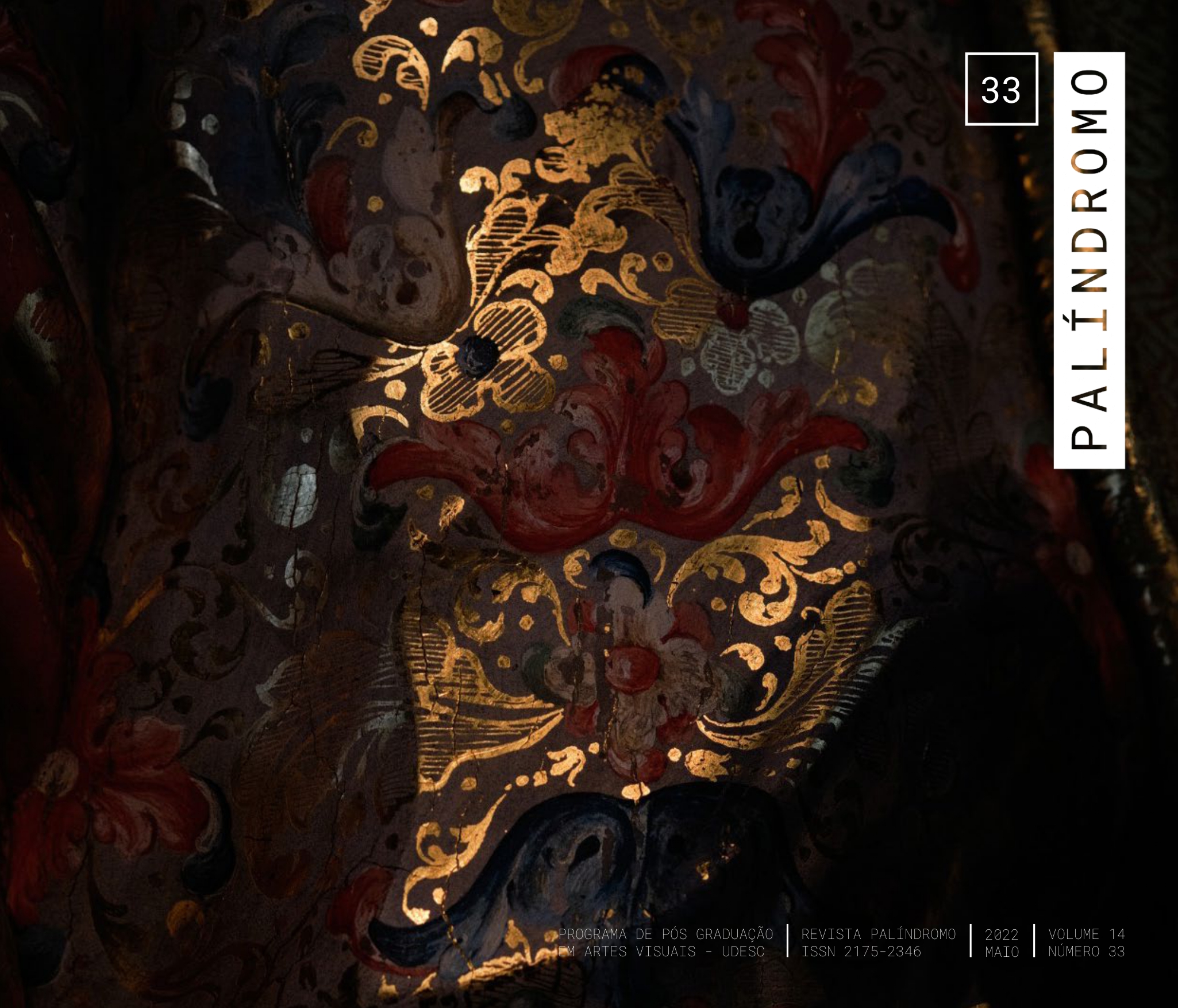Artist books as a device in art research
DOI:
https://doi.org/10.5965/2175234614332022349Keywords:
Artist books, Visual Narrative, Creative process, DrawingAbstract
The essay adresses the creation of artist books as devices that help to systematize my research into visual arts, presenting itself as a way of visual mapping of the creative process, creating clues and possible paths for reflection. Starting from Warburg's methodological approach, when organizing his elliptical library (Warburg Library, currently Warburg Institute) or creating his Atlas Mnemosyne based on the principle of “Law of good neighborhood”, taking into account the ability of books or images to relate to each other without the need for an organization as obvious or linear, such as chronological or by the name of the authors. In this way, starting from the juxtaposition of images, my creation and works by artists who are a reference in my process. I present four artist's books that account for four axes of discussion, within my creative process, which will be presented succinctly in this article, as the central objective will be the discussion of the methodology adopted in the organization of the work itself, through the artist's books, as well as a discussion about the challenges of conducting a research in the area of the creative process. Keywords: Artist's book; visual mapping; creative process.
Downloads
References
DIDI-HUBERMAN, Georges. A imagem sobrevivente: História da arte e tempo dos fantasmas segundo Aby Warburg. Rio de Janeiro: Contraponto, 2013.
______________________. O que vemos, o que nos olha. São Paulo: Editora 34, 2010.
______________________. Diante da imagem. São Paulo: Editora 34, 2013.
DUARTE JÚNIOR, João Francisco. Fundamentos estéticos da educação. Campinas, SP:Papirus, 1988.
ELUF, Lygia (Org). Marcello Grassman (Cadernos de desenho). Campinas, SP: Editora da Unicamp: Imprensa Oficial do Estado de São Paulo, 2011.
HEIDEGGER. Martin. Ser e tempo. Petrópolis: Vozes, 2009.
LANCRI, Jean. Modestas proposições sobre as condições de uma pesquisa em Artes Plásticas na Universidade. In: BRITES Blanca, TESSLER, Elida. (Org.). O meio como ponto zero: Metodologia da Pesquisa em Artes Plásticas. Porto Alegre: Editora da UFRG, 2002. p.16-33.
PÉRIGO, Márcio. Caos aparente. Campinas – SP. Tese de Doutorado. Orientadora: Lygia Arcuri Eluf. Instituto de Artes da Universidade Estadual de Campinas, 2009.
REY, Sandra. Por uma abordagem metodológica da pesquisa em artes visuais. In: BRITES Blanca, TESSLER, Elida. (Org.). O meio como ponto zero: Metodologia da Pesquisa em Artes Plásticas. Porto Alegre: Editora da UFRG, 2002. p.123-140.
SAMAIN, Etienne (Org.). Como pensam as imagens. Campinas-SP: Editora da Unicamp, 2012. DOI: https://doi.org/10.7476/9788526814738
____________________. As “Mnemosyne(s)” de Aby Warburg: Entre Antropologia, Imagens e Arte. Revista Poiésis, n 17, p. 29-51, Jul. de 2011. Disponível em: http://www.poiesis.uff.br/PDF/poiesis17/Poiesis_17_EDI_Mnemosyne.pdf>. Acesso em: 21jul.2017.
RAMPLEY, Matthew. Introduction. In: WARBURG, ABY. The Absorption of the Expressive Values of the Past. Tradução: Matthew Rampley. Art in Translation, v. 1, n.2, pp. 273–283, 2009, p. 274-276. Disponível em: <https://monoskop.org/images/a/a7/Warburg_Aby_2000_2009_The_Absorption_of_the_Expressive_Values_of_the_Past_Introduction_to_the_Mnemosyne_Atlas.pdf > Acesso em:21 jul.20. DOI: https://doi.org/10.2752/175613109X462708
Downloads
Published
How to Cite
Issue
Section
License
Copyright (c) 2022 Andréia Cristina Dulianel

This work is licensed under a Creative Commons Attribution 4.0 International License.
COPYRIGHT STATEMENT
The articles published by the magazine are free to use, intended for academic and non-commercial applications. Copyright is all assigned to the magazine. The articles whose authors are identified represent the expression from the point of view of their authors and not the official position of Palíndromo Magazine. The author (s) commits to whenever they publish material referring to the article published in Palíndromo mention this publication as follows:
This article was originally published by Palíndromo magazine in its volume (place the volume), number (place the number) in the year of (place the year) and can be accessed at: http://www.revistas.udesc.br/index.php/palindromo


